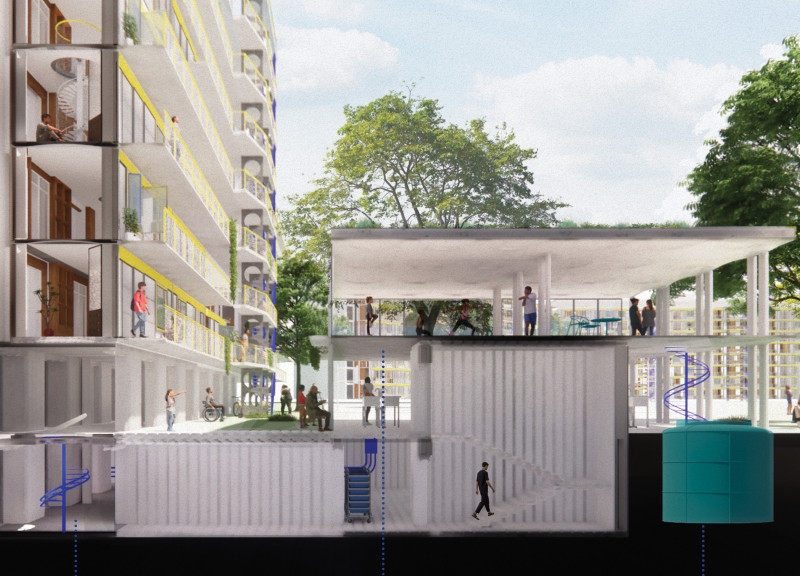5 key facts about this project
The primary function of the project revolves around creating spaces that foster community engagement and well-being. The design incorporates various spaces that cater to both individual and communal activities, ranging from quiet zones for reflection to open areas that encourage social gatherings. The layout thoughtfully directs movement, allowing for intuitive navigation while also promoting interactions among users. By integrating these spaces, the architecture not only serves its intended purposes but also nurtures a sense of belonging and community spirit among its occupants.
Central to the design are various key elements that contribute to the overall experience of the project. The use of natural light is a significant consideration, with large windows and strategically placed skylights that flood interiors with sunlight, enhancing the mood and reducing reliance on artificial lighting. The choice of materials further reinforces the project’s objectives; elements such as locally sourced stone, sustainably harvested wood, and energy-efficient glazing align with the principles of environmental stewardship, thereby creating a building that is not only aesthetically pleasing but also environmentally responsible.
The architectural design incorporates a unique approach to blending indoor and outdoor spaces. A series of terraces and landscaped areas create smooth transitions from the interior to the exterior, encouraging occupants to engage with nature. Plantings are not merely decorative but are integrated into the design to improve air quality and contribute to biodiversity. This connection with the natural environment is a cornerstone of the project, promoting a holistic lifestyle for its users.
In addition to these features, the project's structural system is designed to enhance sustainability. The incorporation of renewable energy sources, such as solar panels and rainwater harvesting systems, demonstrates a forward-thinking approach to energy efficiency. This systems-oriented mindset ensures that the building operates harmoniously within its environment, reducing its carbon footprint while maintaining comfort and convenience.
An important aspect of the project is its response to the local architectural context. The design respects the surrounding structures and cultural heritage, drawing inspiration from local materials and traditional forms while integrating modern design principles. This thoughtful response enriches the architectural dialog within the neighborhood, allowing the new structure to feel both contemporary and rooted in its historical context.
The unique elements of the design are further reflected in the interiors, where flexibility reigns supreme. Spaces can be reconfigured to accommodate different activities, meeting the needs of diverse users through adaptable furnishings and movable partitions. This versatility ensures that the architecture remains relevant over time, capable of evolving alongside the community it serves.
As you explore more about this project, the architectural plans, sections, and specific design details will reveal further insights into its innovative features and thought-provoking ideas. Delve into the architectural designs presented and consider how these elements contribute to a cohesive vision that balances practicality with beauty. This multifaceted architectural project serves as a prime example of how thoughtful design can foster vibrant community spaces while adhering to principles of sustainability and cultural sensitivity. For those interested in understanding architectural ideas that transcend conventional boundaries, further exploration of the project’s presentation will uncover the depth and breadth of its design philosophy.


























